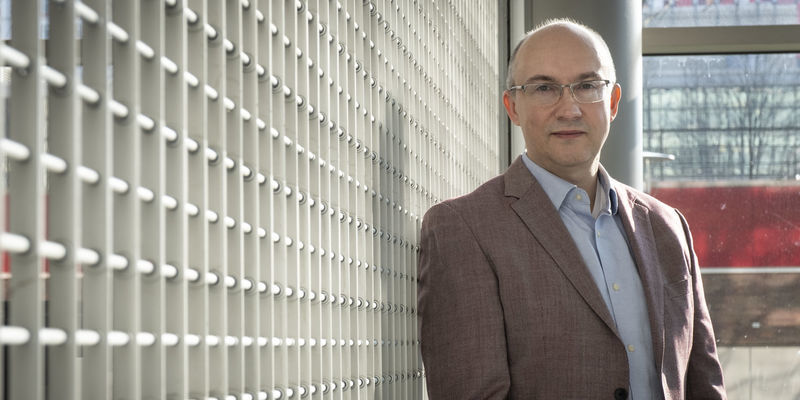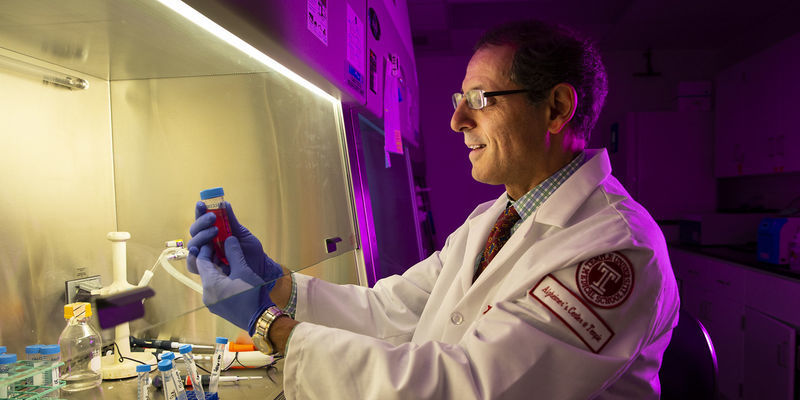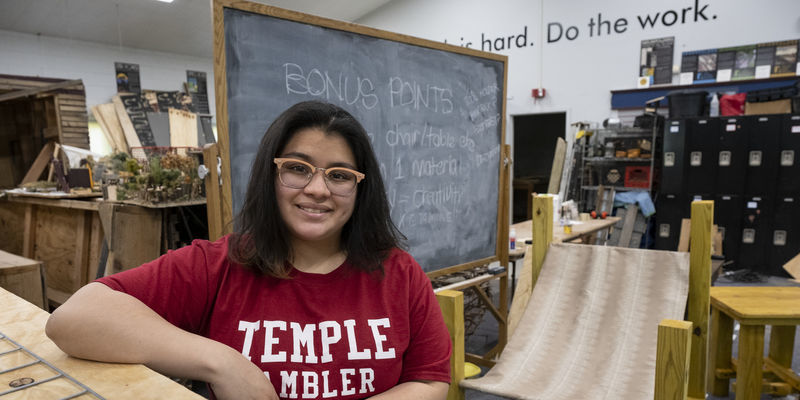Occupational therapy students team up with TechOWL to create adaptive technology designs for disability community
In an effort to make the world a more accessible place, Temple University occupational therapy graduate students have created innovative convenience products that help people with disabilities live more freely.
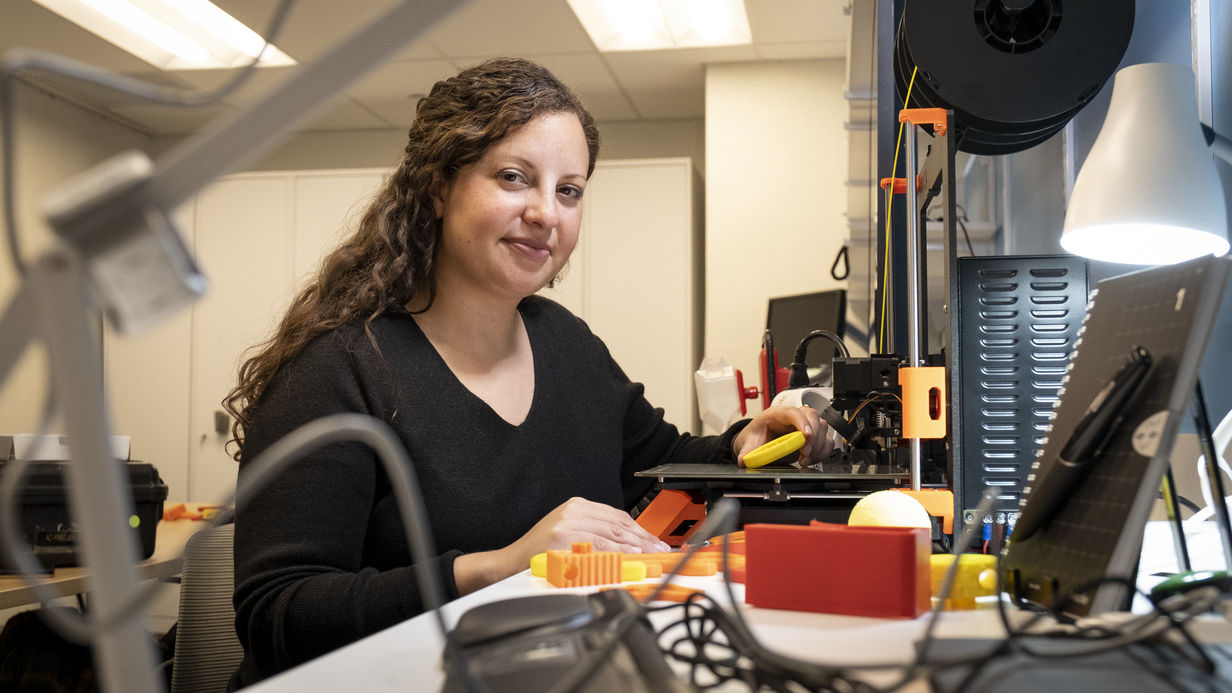
This semester, occupational therapy graduate students at the College of Public Health collaborated with the TechOWL (Technology for Our Whole Lives) team to create custom designs that improve the functional capability of children and adults living with disabilities.
The students were grouped into teams of three or four and assigned individual clients—ranging from babies as young as 10 months old to adults living in group homes—who were in need of specific devices that could help with everyday tasks.
After interviewing their clients, it was up to the students to design and create products using inexpensive everyday materials and donations. Ultimately, their goal was to demonstrate how we can create devices that make the world a little more accessible without spending a lot of money.
One of the three lab instructors overseeing the project was Alanna Raffel, an assistive technology specialist and occupational therapist with TechOWL. She explained that their mission wasn’t to fix disabilities, but rather create an environment that makes living with them easier.
“TechOWL is a part of the Institute on Disabilities at Temple and a part of a much larger community. I’m really optimistic that these students will carry the skills they learned here over to their careers,” she said.
TechOWL’s overarching purpose is to get people what they need and make the user the focal point of their designs. The students honored this by not only constructing devices that helped their clients, but also designing them to reflect each client’s interests, making them as visually appealing as they are useful.
One team was assigned to a man in his 30s who had trouble using his television’s remote control and wanted an easier way to watch the Philadelphia Eagles’ football games from his bed. Not only did the students design a cardboard slant board that allows him to easily manipulate the buttons, but they also took the time to paint it with the team’s colors and logo.
Another team was assigned a 4-year-old boy with several health complications, including cerebral palsy and hip dysplasia. Their project was adapting a traditional bicycle to include a built-in seat and harness, so he could go out and play as other children do.
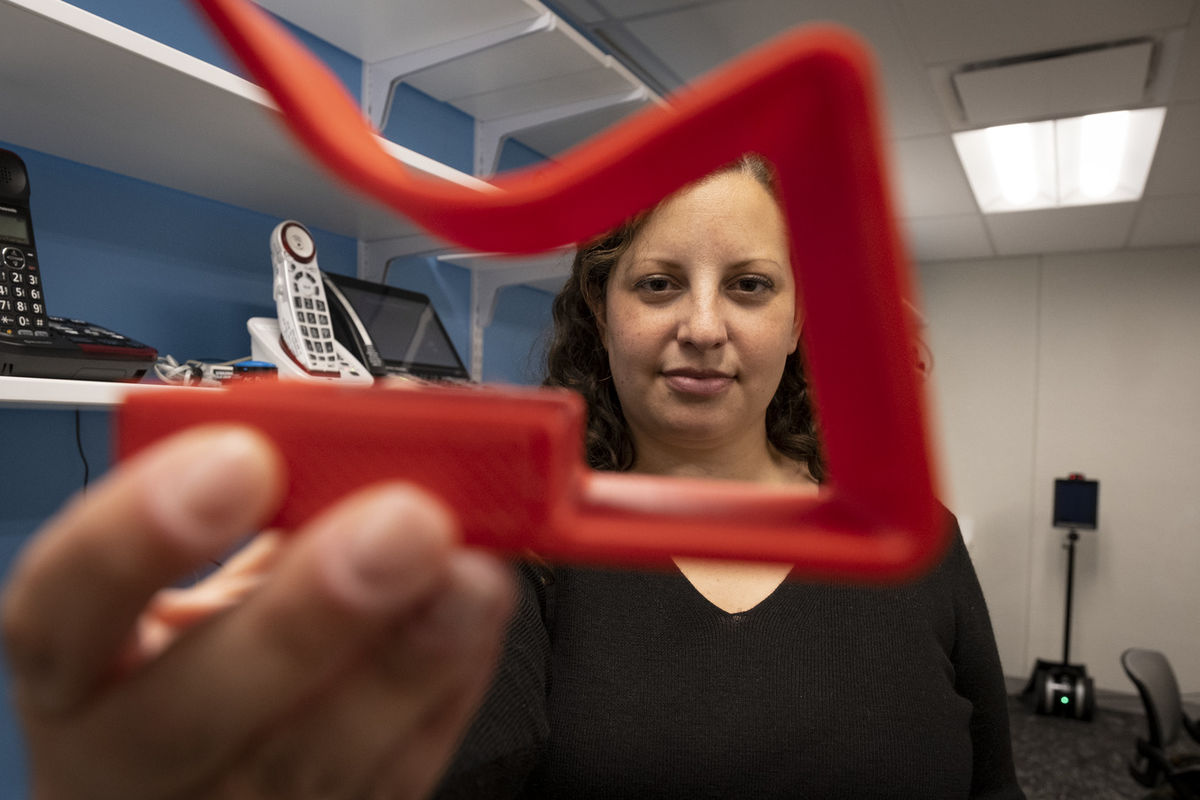 Raffel hopes the lessons the students learned working on adaptive designs will help inform their professional lives. (Photo by Joseph V. Labolito)
Raffel hopes the lessons the students learned working on adaptive designs will help inform their professional lives. (Photo by Joseph V. Labolito)
Michael Dempsey, Class of 2022, was in charge of building and fabricating the design. “So many children who live with disabilities are not offered the same access and opportunities to engage in occupations that they enjoy. Riding a bike is a basic childhood activity that every child should be able to participate in. However, many medical bikes that offer the necessary support cost thousands of dollars” Dempsey said. “To be able to build an affordable yet effective piece of equipment that will add joy to this child’s life is worth every second of effort.”
The students worked directly with the Tyler School of Art and Architecture, which gave them access to power tools and equipment, provided a workroom for them to build in, and also advised them on engineering-related issues.
Among the biggest obstacles the students faced were time management and finding the necessary materials. They mostly relied on donations and heavy-duty cardboard to create their designs and had around five weeks to work on their projects from start to finish.
When presenting their work to the rest of their class, many of the students said the most important thing they had learned was that you could create life-changing innovations using low-cost supplies. They also said that trial and error is a crucial part of the design process, as is being flexible.
One team created a rocking chair using reinforced cardboard that’s close to the ground and is able to support the weight of a full-grown man. Their clients were a group of four men with autism living in a group home who wanted sensory equipment—which generally engages touch, smell, sight, hearing, movement and balance to help people remain calm and improve brain development. The students decorated the sides of the rocking chair with soft materials including felt, cloth and suede, so that the men could enjoy the different textures as they relaxed.
The projects are set to be delivered to the clients in the next few weeks.
“I’m hopeful that introducing the students to this way of thinking is something they will take with them as practitioners,” Raffel said.
Ultimately, they learned you don’t need a large budget or expensive materials to make the world a more accessible place.
—Christine Nolthenius
